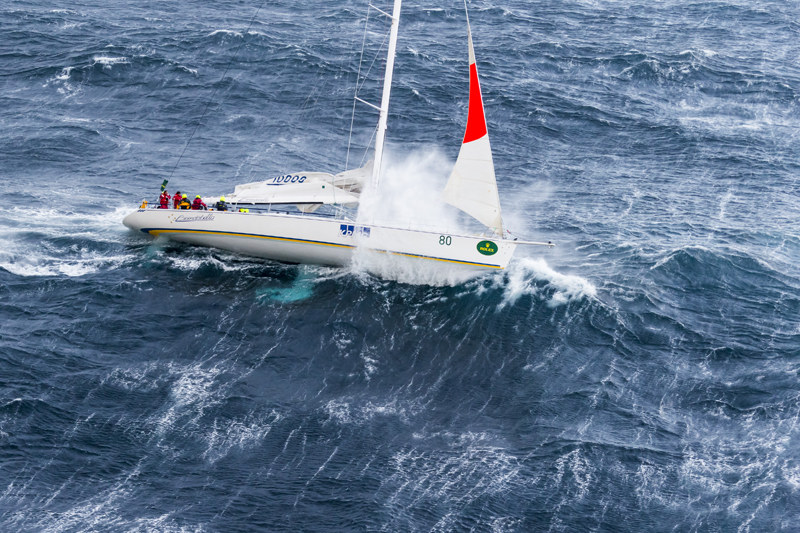
Rolex Sydney-Hobart
The Bay Area’s calm wintertime weather serves as a dramatic contrast to the wet and wild conditions experienced during the recent Rolex Sydney Hobart Yacht Race. The 69th edition of this annual 628-mile bluewater classic was considered by many to be the most competitive fleet ever, and it not only lived up to the pre-race hype, but also to it’s well-earned reputation as one of the most grueling and challenging races on the planet.
The 92 starters saw every sort of condition imaginable — becalmed to 40-knots downwind, 50-knots upwind, and everything in between — classic Sydney-Hobart.

Before the race started, there was one major question among race fans and journalists alike; could anyone beat wine magnate and AC 35 challenger Bob Oatley’s 100-foot supermaxi Wild Oats XI? While vying for a record-tying seventh line honors victory, she would be thoroughly tested by an über-competitive fleet that was headlined by Anthony Bell’s 100-foot Perpetual LOYAL, which was navigated by Bay Area rockstar Stan Honey.
Upwind after the start, the fleet faced their first tactical dilemma; tack to port and begin heading south, or stay on starboard and work further offshore into presumably more reliable breeze and positive current. LOYAL chose the latter and worked to an early lead, before sailing into a windless hole. By contrast, Wild Oats XI found the building northerly first and shot out to a 30-mile lead that she would continue to extend on until the finish.
When the front hit, the leaders sailed upwind into 40-knots of breeze out of the south while the bulk of the fleet sailed into a 50-knot westerly in Bass Strait and down the coast of Tasmania. Broken bones, broken rigs, broken egos and retirements were the story of the day as the fleet dealt with the classic, fast-moving depression that rolled over Tasmania. When the spray settled, Wild Oats XI claimed line honors for the seventh time in just nine Sydney-Hobarts, while Daryl Hodgkinsons’ canting-keeled Cookson 50 Victoire claimed the overall victory and coveted Tattersalls Cup.
Elsewhere in the Southern Hemisphere, the bi-annual Cape 2 Rio race started on January 4 in Cape Town, South Africa. Setting sail in light and sunny conditions, the 36-boat fleet braced for impact from a cold front that would bring up to 60 knots of breeze and nearly 20-foot seas by the first night. Ten competing yachts sustained damage and retired in the rough conditions including the Angola-based Bavaria 54 Bille. Initially reporting mainsail problems and turning back for Cape Town, Bille was dismasted, killing one and injuring two. The deceased crewmember was António João Bartolomeu, a 47-year-old radio operator for the Angolan capital of Luanda. António had been sailing since he was nine years old and was one of his country’s best sailors in the popular Vaurien two-man dinghy.
Leading the line honors race and currently second in Division 1 on handicap is Giovanni Soldini and crew aboard the turboed Volvo 70 Maserati. With the cold-front having moved east and dissipated, the fleet is now enjoying mellow, albeit inconsistent downwind sailing towards the finish in Rio de Janeiro, Brazil.
